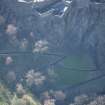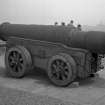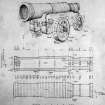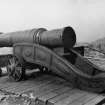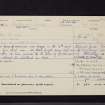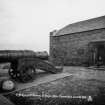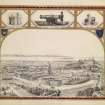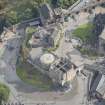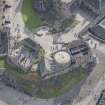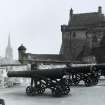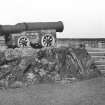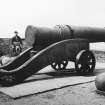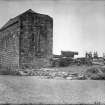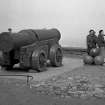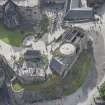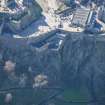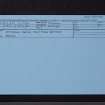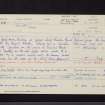Pricing Change
New pricing for orders of material from this site will come into place shortly. Charges for supply of digital images, digitisation on demand, prints and licensing will be altered.
Edinburgh Castle, Mons Meg
Cannon (Period Unassigned)
Site Name Edinburgh Castle, Mons Meg
Classification Cannon (Period Unassigned)
Canmore ID 52069
Site Number NT27SE 1.01
NGR NT 25145 73515
Datum OSGB36 - NGR
Permalink http://canmore.org.uk/site/52069
- Council Edinburgh, City Of
- Parish Edinburgh (Edinburgh, City Of)
- Former Region Lothian
- Former District City Of Edinburgh
- Former County Midlothian
NT27SE 1.01 25145 73515
MONS MEG (NR).
OS 1:500 plan, 1895; 1/1250 map, (1947).
This piece of ordnance was forged in the 15th century. The gun is of iron, its total length being 13ft 4in.
In 1754 it was removed to the Tower of London and was returned to Scotland in 1829.
J S Richardson and M Wood 1948.
Similar information.
RCAHMS 1951; J Hewitt 1853; J B Paul 1916.
(NT 2515 7351) As described above. In good condition.
Visited by OS(JD) 29 December 1953.
As described in previous field report.
Visited by OS (SFS) 27 November 1975.
Publication Account (1951)
ORDNANCE, ETC.
No account of the Castle would be complete without reference to Mons Meg, a 15th-century iron bombard which was known in the two last decades of that century simply as ‘Mons’ or ‘Monce’, and after 1650 as ‘Muckle Meg’. It stands beside St. Margaret's Chapel on an oak carriage, presented in 1934. The name suggests that the piece was made at Mons in Flanders. It is composed of bars of iron welded together, over which iron rings have been shrunk, and may have been breech-loading as the breech-block appears to be screwed in. The over-all length is 13 ft. 2 in., the weight is 5 tons, and the calibre is 19½ in. With iron shot of 1125 lbs. the piece had a range of 1500 yards, with a stone shot of 549 lbs. the range would be 2900 yards. A full account of this gun will be found in the Archaeological Journal, x, pp. 25-32, and also in P.S.A.S., I (1915-6), pp. 198 ff.
The Argyle Battery mounts six muzzle-loading eighteen-pounders of the late 18th century. The collection of arms in the Great Hall includes the following Scottish pieces:- 2 Lochaber axes, 17th-18th century; 1 voulge, 16th-17th century; a number of basket-hilted broad-swords, 18th-19th century; 4 Highland targes and a dirk, all 18th century; Scottish pistols, 18th-19th century.
RCAHMS 1951
Field Visit (29 December 1953)
(NT 2515 7351) As described above. In good condition.
Visited by OS(JD) 29 December 1953.
Field Visit (27 November 1975)
As described in previous field report.
Visited by OS (SFS) 27 November 1975.
Watching Brief (7 July 2001)
A Watching brief was carried out by Kirkdale Archaeology in the Mons Meg vault after the removal of Mons Meg. A detailed record was made of the room, see Kirkdale Archive for full description.
D Murray 2001
Sponsor: Historic Scotland
Kirkdale Archaeology
Excavation (10 January 2002 - 6 February 2002)
As part of a series of excavation on the Edinburgh Castle vaults in 2002 Kirkdale Archaeology carried out an exacavation on the Mons Meg vault.
Sponsor: Historic Scotland
G Ewart 2002
Kirkdale Archaeology
Watching Brief (19 March 2012)
NT 2515 7351 A record was produced of a 5 x 1.9m area of deposits revealed during the removal of a series of stone steps near Mons Meg on 19 March 2012. The steps provided access to the E side of the battery presently occupied by the late medieval gun. The removal of the steps revealed aspects of the 1894 programme of landscaping (in terms of the residual evidence of the steps), by which time the northern part of the inner curtain wall had been demolished leaving a grassy slope above the cliff. However, a truncated platform may be considerably older. The platform (as depicted on an early 18th-century plan) may have been created by simply truncating and/or levelling the upper surface of an earlier earthwork, already in situ.
Archive: RCAHMS (intended)
Funder: Historic Scotland
Information from Gordon Ewart (Kirkdale Archaeology) March 2012.
OASIS ID - kirkdale1-310829






























